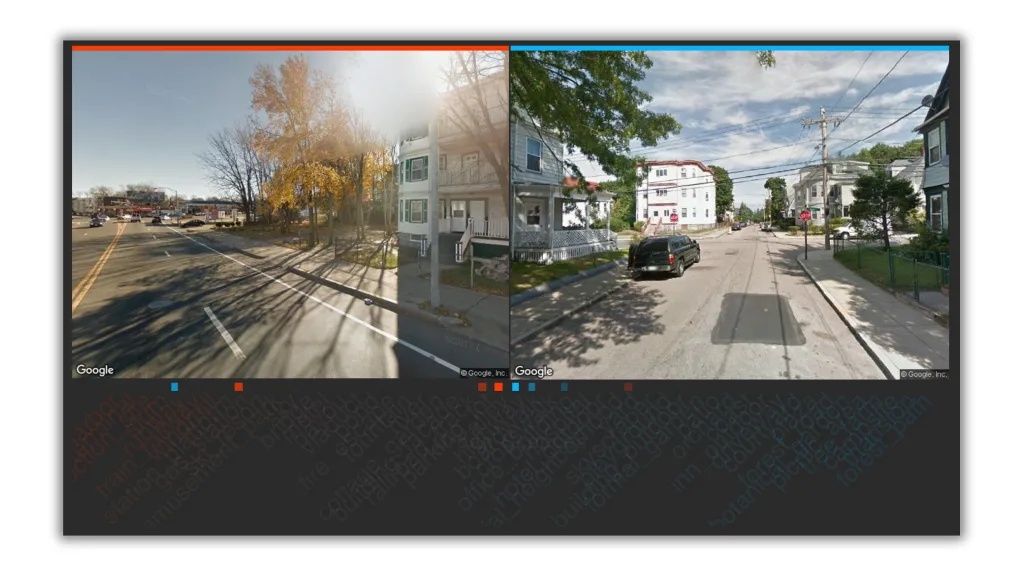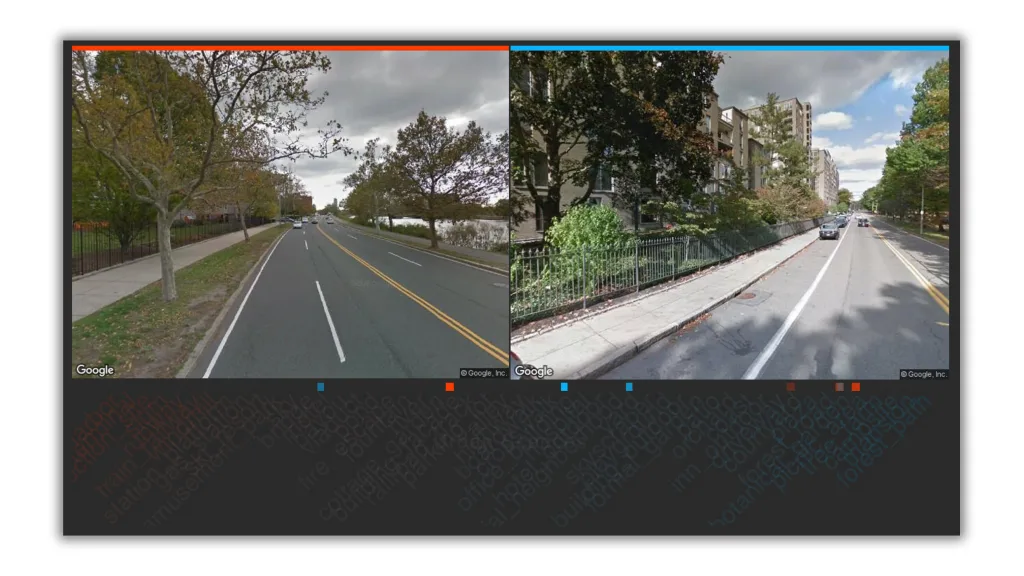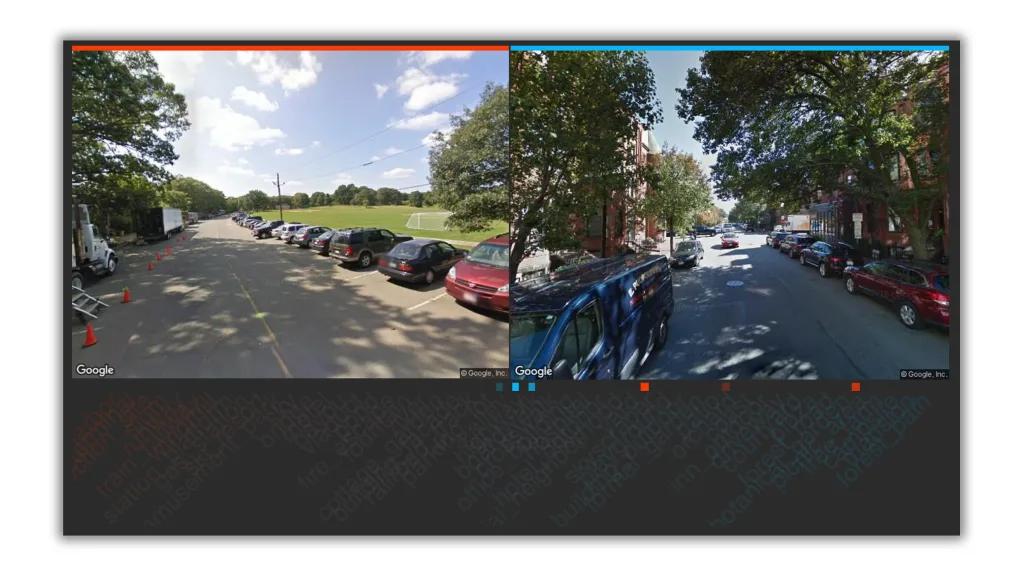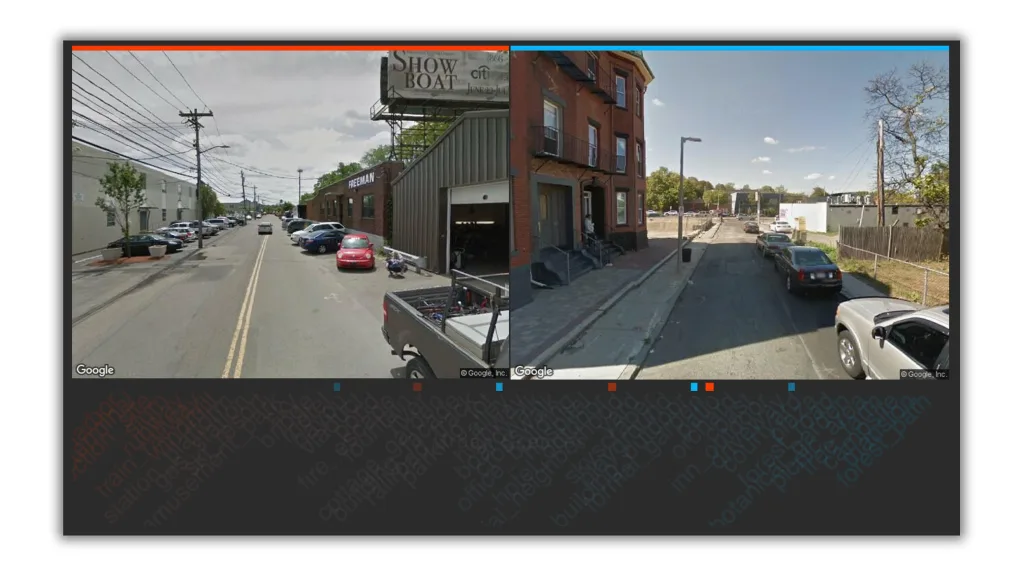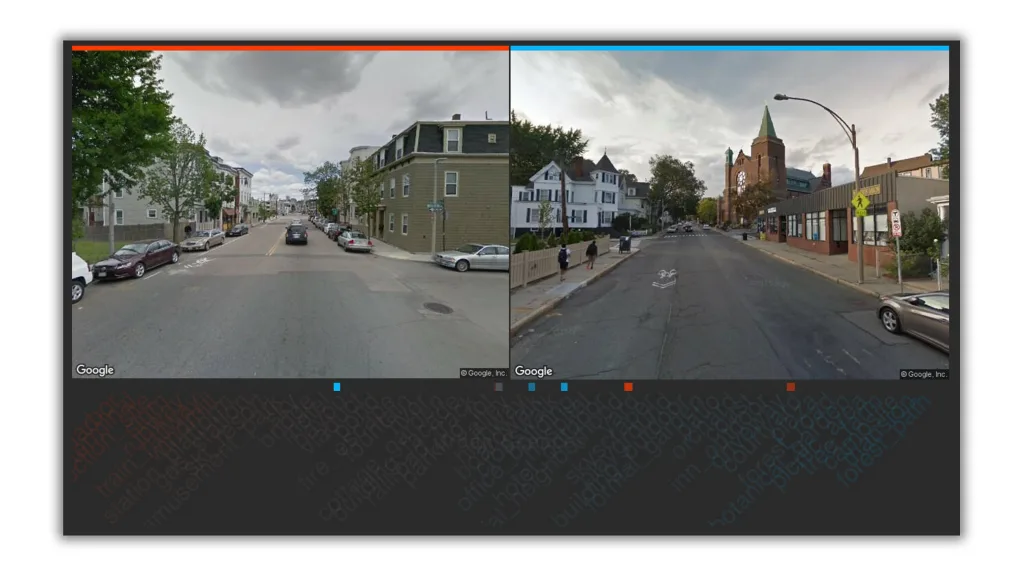Seven years ago, MIT debuted a landmark project, which allowed everyday people to photograph and rate their streets like a Hot or Not for cities. It was a powerful showcase of how crowdsourcing opinions from citizens could help quantify a city’s appeal and, in theory, help urban designers plan better cities.
Less than a decade later, artificial intelligence is taking this idea so much further. FaceLift is a new AI system developed by Nokia Bell Labs Cambridge that allows scientists and urban planners to use a crowd’s aggregated sensibility to actually redesign the look of city streets. FaceLift AI can take any Google Street View scene and beautify it instantly—but at what cost?
To create FaceLift, 82,000 volunteers from 162 countries were tasked with rating 20,000 Google Street View images as beautiful or ugly. That data was pumped into an AI that then deconstructed people’s preferences by features in these scenes: It learned picnic areas, orchards, and plazas were considered beautiful, while viaducts and construction sites were not. (Who knew?!?) Then in a final step, a “generative” AI system was tasked with beautifying images of a street by editing it with newly generated imagery (much like how a deepfake is made).
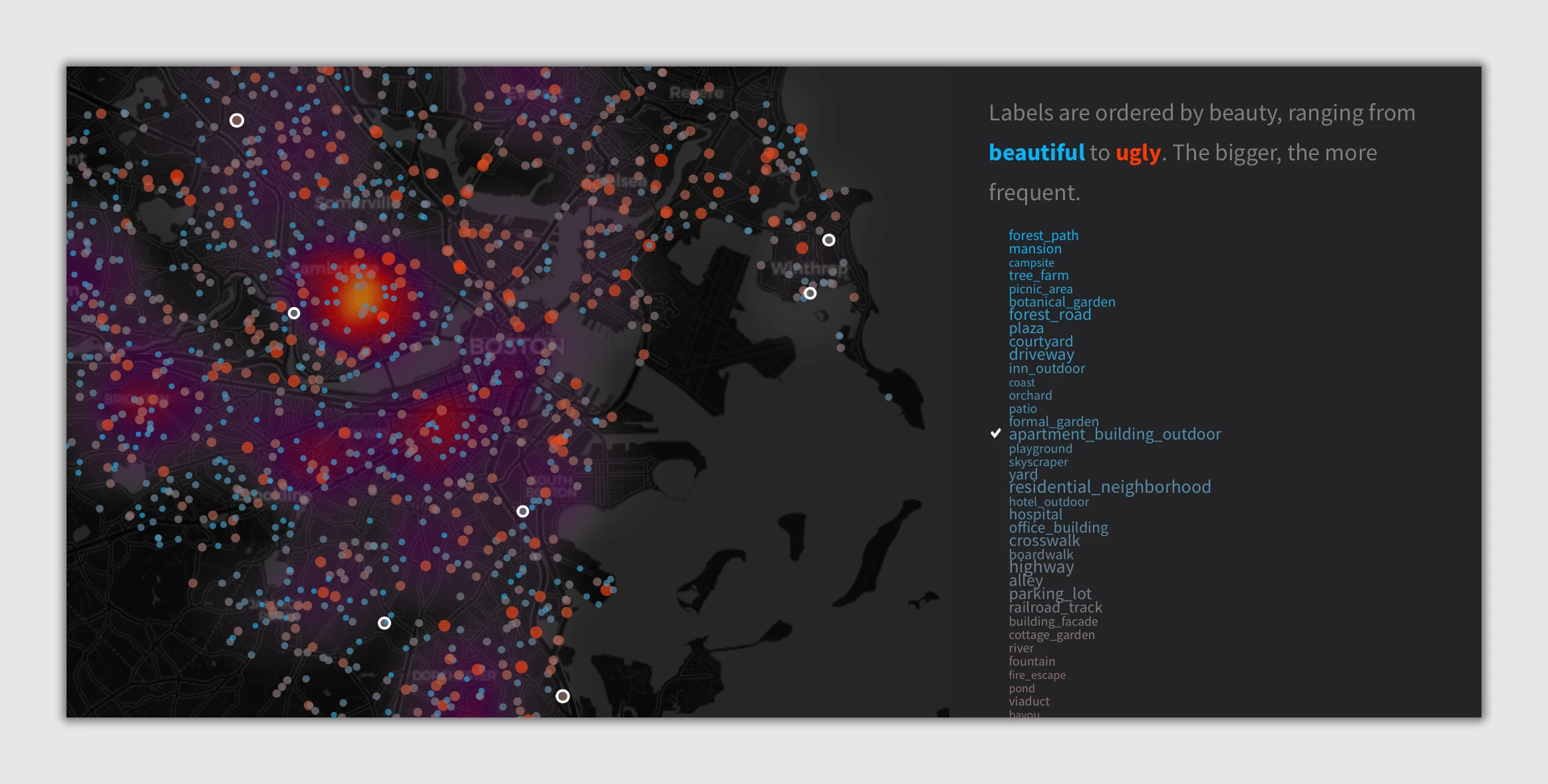
You can see the results for yourself in FaceLift’s interactive map of areas around Boston. It’s in part a heat map that shows where beloved and hated features can be found in the city. It also includes a few side-by-sides of pre- and post-beautified streets on the map. The remade streets are completely unrecognizable compared to the originals, and you can learn a lot about what we consider beautiful by taking a look for yourself:
[Image: FaceLift]I expected to see streets made over with fountains and fancy landscaping. Instead, the revised versions get decidedly less sexy adjustments such as crosswalks and sidewalks, because people find such public resources beautiful (perhaps for the same reason they find greenery beautiful—these pedestrian considerations imply a certain safety and security). You can also see that people prefer densely built streets lined with parked cars to more open areas, even if they have green fields and plentiful open parking (it’s amazing how spacious areas in a city actually appear barren rather than luxurious).
The team has offered the AI’s code for anyone with the know-how to download and try for themselves; the target audience is mostly urban planners, though the researchers believe it offers citizens a powerful way to reconsider their neighborhoods, too. In theory, FaceLift could remake every block of an entire city, providing City Hall with a scientifically measurable portrait of block-by-block improvement.
But that prompts a question: Is FaceLift a tool for beautification, or is it a tool for gentrification? Could its one-size-fits-all approach to taste enable homogenous cities with cookie-cutter designs?
I posed this to Daniele Quercia, a researcher on the project. He agreed that this would be a potential concern, if computers were handed all the keys to the decision-making. “Just blindly applying a computational judgment would not suffice, and more work is thus needed to understand when using these algorithms is appropriate and when it is not,” he wrote via email. “At the same time, these types of platforms allow for much wider audiences to contribute to the redesign of urban spaces.”
For now, the biggest insights I see lurking in the interactive map is that a city block doesn’t need whimsical forest paths or fancy botanical gardens to be desirable. It just needs people living there with diverse buildings, trees providing shade, and designated places to walk. You don’t need an urban planning degree to understand how these simple ideas make a city so much more appealing, but then again, FaceLift’s pretty pictures sure do demonstrate the point as clear as day.
Recognize your brand’s excellence by applying to this year’s Brands That Matter Awards before the early-rate deadline, May 3.

